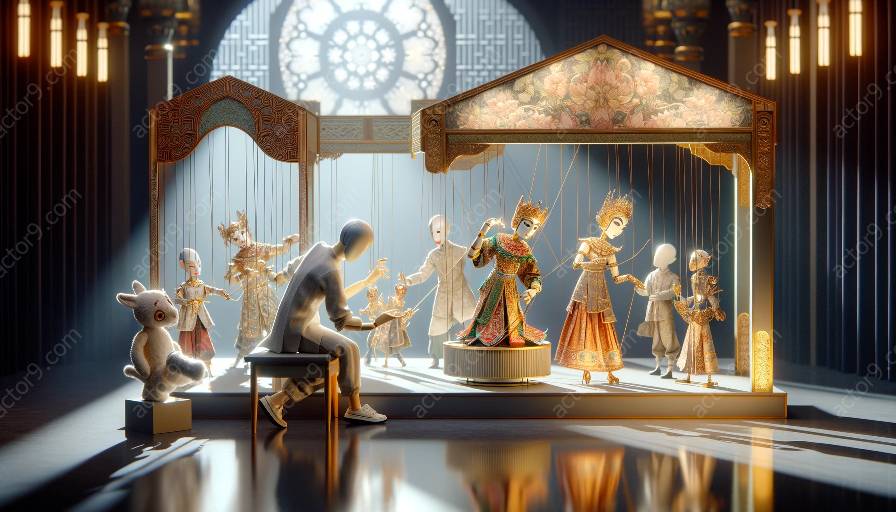Discover the rich history and diverse cultural traditions of puppetry and mask theatre in various cultures, and explore how these art forms contribute to acting and theater.
The Rich History of Puppetry and Mask Theatre
Puppetry and mask theatre have been an integral part of cultural traditions and performances in diverse societies around the world. From ancient times to modern-day productions, these art forms have served as powerful means of storytelling, entertainment, and cultural expression.
Puppetry Across Cultures
Puppetry has a long and vibrant history in various cultures, each with its unique styles, techniques, and storytelling mediums. In Asia, shadow puppetry has been a prominent art form, with countries like China, Indonesia, and India maintaining rich traditions of shadow puppet performances. In Europe, puppetry has evolved with distinct styles such as marionettes and hand puppets, each contributing to the cultural tapestry of the region. African cultures also boast an array of puppetry traditions, with the use of elaborate masks and sculptures to bring stories and myths to life.
Mask Theatre in Different Traditions
The use of masks in theatre has been prevalent in many cultures, often serving as a way to embody characters, spirits, or deities. In ancient Greek theatre, actors donned masks to portray various roles, while Japanese Noh and Kyogen performances incorporated intricately designed masks to bring mythical and historical narratives to the stage. Indigenous cultures in the Americas and Africa have also utilized masks in their ceremonial and storytelling traditions, adding depth and symbolism to their performances.
Contribution to Acting and Theatre
Puppetry and mask theatre have significantly impacted the world of acting and theater, influencing various aspects of performance and storytelling. Actors trained in puppetry techniques often bring a heightened sense of physicality and control to their craft, while mask work enhances the expressiveness and subtlety of character portrayal. Additionally, the integration of puppetry and masks in theater productions adds layers of symbolism and visual storytelling, enriching the overall theatrical experience for audiences.
Modern Interpretations and Collaborations
Contemporary theatre continues to explore and blend puppetry and mask traditions from different cultures, leading to innovative and compelling productions that bridge cultural divides and create immersive experiences for audiences. Collaborative projects between artists from diverse backgrounds have resulted in groundbreaking performances that celebrate the universal language of visual storytelling.
Embracing Diversity Through Puppetry and Mask Theatre
As global appreciation for diverse cultural traditions grows, puppetry and mask theatre serve as powerful tools for promoting cross-cultural understanding and appreciation. By showcasing the beauty and artistry of these traditions, artists and practitioners contribute to the preservation and celebration of cultural heritage while fostering empathy and connection across borders.















































